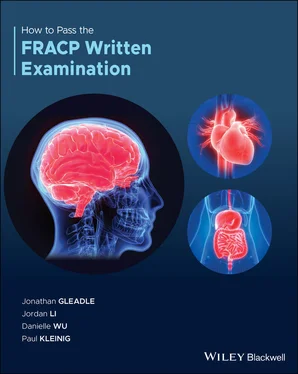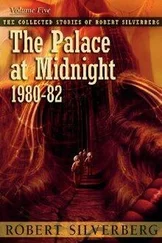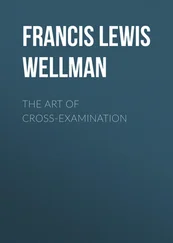The indications and contraindications for ECMO in critically ill patients are listed in Tables 2.1and 2.2.
Table 2.1 Indications for ECMO.
| Indications for VA‐ECMO |
Indications for VV‐ECMO |
| Acute myocardial infarction |
Reversible causes of acute respiratory failure |
| Fulminant myocarditis |
ARDS |
| Acute exacerbations of chronic CCF |
Trauma—extensive pulmonary contusion |
| Cardiac failure due to intractable arrhythmias |
Massive pulmonary embolism with refractory shock and/or cardiac arrest |
| Primary graft failure following cardiac transplantation |
Graft dysfunction following lung transplantation |
| Acute heart failure secondary to drug toxicity |
Inability to provide adequate gas exchange without risk of ventilatory injury |
| Postcardiac arrest (as part of advanced life support) |
Pulmonary haemorrhage |
Table 2.2 Contraindications to ECMO.
| Chronic respiratory or cardiac disease with no hope of recovery or transplant |
| Out‐of‐hospital cardiac arrest with prolonged down time |
| Severe aortic regurgitation or type A aortic dissection or severe peripheral vascular disease if using VA‐ECMO |
| Refractory septic shock in adults with preserved left ventricular function |
| ARDS with advanced multiorgan failure |
| ARDS in patient with advanced age |
| Prolonged pre‐ECMO mechanical ventilation |
| Therapeutic anticoagulation is a relative contraindication |

Ali J, Vuylsteke A. Extracorporeal membrane oxygenation: indications, technique and contemporary outcomes. Heart 2019; 105:1437–43.
https://heart.bmj.com/content/105/18/1437.abstract
8. Answer: A
The most common cause of drowsiness in the admitted patient is a metabolic encephalopathy. Thorough neurological examination is needed, however, to rule out focal central nervous system pathology. Common causes of encephalopathy are infection, medications, decompensated hepatic failure, and hypercania. Less common causes include endocrine causes and electrolyte disturbance. In this case, type 2 respiratory failure is the most likely cause given the findings on history and examination.

Alpert J. Evaluation of the Poorly Responsive Patient. The Neurologic Diagnosis [Internet]. 2018 [cited 30 June 2020];163–206. Available from: https://link.springer.com/chapter/10.1007/978‐3‐319‐95951‐1_5
9. Answer: C
Intra‐aortic balloon pump (IABP) is a percutaneous temporary mechanical circulatory support that creates more favourable balance of myocardial oxygen supply and demand by using systolic unloading and diastolic augmentation.
The IABP, by inflating during diastole, displaces blood volume from the thoracic aorta. In systole, as the balloon rapidly deflates, this creates a vacuum effect, reducing afterload for myocardial ejection and improving forward flow from the left ventricle. The net effect is to decrease systolic aortic pressure by as much as 20% and increase diastolic pressure, but the MAP is usually unchanged. This subsequently results in decreased left ventricle wall stress reducing the myocardial oxygen demand. Overall, these haemodynamic changes indirectly improve the cardiac output by increasing stroke volume, particularly in patients with reduced left ventricular function. The augmentation of diastolic pressure by IABP leads to an increase in myocardial perfusion especially epicardial coronary circulation.
Indication for placement can include:
Myocardial infarction with decreased left ventricular function leading to cardiogenic shock
Myocardial infarction with mechanical complications causing cardiogenic shock, i.e., acute mitral regurgitation due to papillary muscle rupture or ventricular septal rupture
Acute congestive heart failure exacerbation with hypotension
As prophylaxis or adjunct treatment in high risk percutaneous coronary intervention
Low cardiac output state after coronary artery bypass grafting surgery
As a bridge to definitive treatment in patients with any of the following conditions: intractable myocardial ischaemia, refractory heart failure, or intractable ventricular arrhythmias
However, studies have not shown any survival benefits with the use of IABP and there is no convincing randomised data to support the routine use of IABP in infarct‐related cardiogenic shock.

Unverzagt S, Buerke M, de Waha A, Haerting J, Pietzner D, Seyfarth M et al. Intra‐aortic balloon pump counterpulsation (IABP) for myocardial infarction complicated by cardiogenic shock. Cochrane Database of Systematic Reviews. 2015.
https://www.cochranelibrary.com/cdsr/doi/10.1002/14651858.CD007398.pub3/abstract
10. Answer: A
Advance care planning in a health care context can be described as the process by which an individual sets out their wishes for medical care in the event that they are unable to make decisions themselves. In addition, advance care planning can set out who they would like to assist in medical decision making such as family or close friends. Advance care planning has been shown in multiple studies as being valuable to patients and their families. Additionally, randomised controlled trials have shown significant improvement in several outcomes; decreased utilisation of healthcare and cost, increased satisfaction with care, decreased use of hospital resources, improved concordance with wishes. However, these trials have not been of sufficient rigour and size to evaluate whether advance care planning improves quality of end‐of‐life care such as by measures of individual comfort.

Weathers E, O’Caoimh R, Cornally N, Fitzgerald C, Kearns T, Coffey A et al. Advance care planning: A systematic review of randomised controlled trials conducted with older adults. Maturitas. 2016;91: 101–109.
https://pubmed.ncbi.nlm.nih.gov/27451328/
11. Answer: C
Necrotising fasciitis is a rapidly progressive infection of the fascia, with secondary widespread necrosis of the subcutaneous tissues. The frequency of necrotising fasciitis has been increasing because of an increase in immunocompromised patients with diabetes, peripheral vascular disease, alcoholism, organ transplants, and neutropenia. The causative bacteria may be aerobic, anaerobic, or mixed flora. The three most important types are as follows:
Type I, or polymicrobial
Type II, or group A streptococcal
Type III gas gangrene, or clostridial myonecrosis
The reported mortality in patients with necrotising fasciitis has ranged from 20% to as high as 80%. Early diagnosis is key and requires a high index of suspicion as the initial lesion is often trivial. In many cases of necrotising fasciitis, antecedent trauma or surgery can be identified. Necrotising fasciitis requires urgent surgical intervention, and the urgent initiation of broad spectrum antibiotics. Admission to the intensive care unit is likely required, as these patients are usually profoundly shocked.
Читать дальше
















